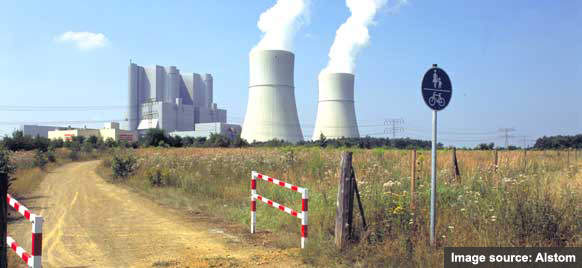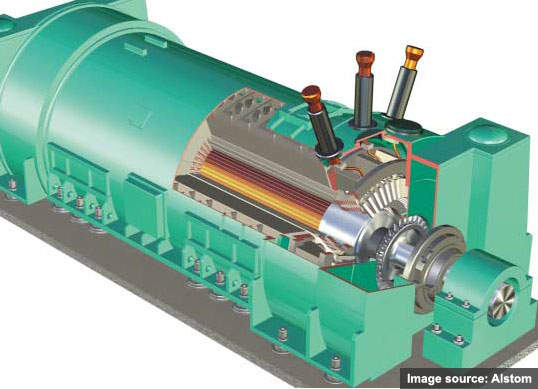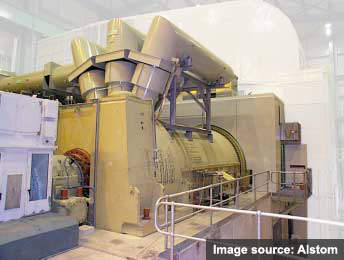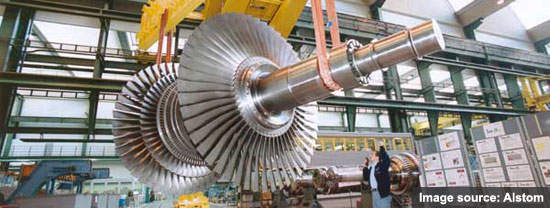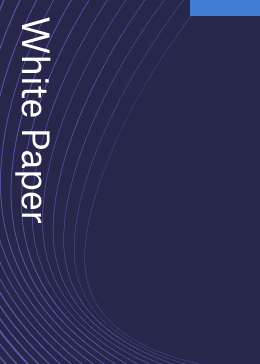AES has begun construction of the company’s first power plant in Bulgaria, a $1.4bn 670MW lignite-fired plant. The turnkey project is the single largest foreign investment to date in Bulgaria, and one of the largest greenfield investments in south-east Europe. The new Maritza East I plant, located near the town of Galabovo, south-east Bulgaria, will be the first large scale power plant to be built in the country in more than 20 years.
Alstom will provide the two 335MW pulverised coal boilers. It will also supply Topgas turbogenerator (an indirectly hydrogen-cooled turbogenerator that can produce above 500MVA), coal and ash handling systems, and electrical, information and control systems. The company will provide engineering, procurement, construction, and in-house manufacturing of the main equipment.
The plant is supported by a 15-year power purchase agreement with the national electricity utility in Bulgaria, Natsionalna Elektricheska Kompania (NEK), and a 15-year lignite supply agreement with the state owned mining company, Maritza East Mines (MMI). On completion, the base load facility will serve as a source of electricity for Bulgaria and south-eastern Europe. It is expected to begin operation in 2009.
EMISSIONS LEVELS BELOW EU DIRECTIVE
Emissions control will use Alstom’s post-combustion equipment, and will conform to the EU Large Combustion Plant Directive. The limestone-based wet flue gas desulphurisation (wet FGD) system will achieve 98% sulphur dioxide removal.
The electrostatic precipitator (ESP) will limit particulate emissions. In an ESP, dust particles are charged by corona current electrons flowing between the discharge electrodes and the collection electrodes (or plates). The electrostatic field drives the charged dust particles to the collecting plates. Periodically, the collecting plates and the discharge electrodes are ‘rapped’ (vibrated) to remove the dust particles. The dust particles fall off the plates and electrodes in agglomerated chunks and fall under gravity into collection hoppers at the bottom of the electrostatic precipitator. The dust is removed from the hoppers either continuously or periodically, depending on the application.
Alstom’s ESP designs incorporate rigid frame spiral electrodes or rigid discharge electrodes. There is a choice between tumbling hammer or magnetic impulse gravity impact (MIGI) rapping systems. The EPIC II control system uses control algorithms to vary charging ratios in response to changing conditions in the ESP and address difficult operational conditions such as Back Corona. The Switched Integrated Rectifier (SIR) uses high frequency electronic power processing techniques and can deliver more power in a compact integrated package than traditional Transformer Rectifier Systems.
SO³, Na²O, Si, Al, Fe, and other boiler flyash constituents can have a significant impact on ESP performance. Coals with difficult flyash can demand ESPs with significantly increased collecting surface area to meet a given outlet performance.
GOOD ECONOMIC GROWTH
Bulgaria is experiencing strong economic growth as it prepares for the EU, with a growth rate nearly double that of the average EU country. The country has recently closed two 440MW nuclear reactors on EU entry over safety concerns.
Project Finance magazine named AES Maritza ‘European Power Deal of the Year’ for 2005. The project is being financed through a consortium of the European Bank for Reconstruction and Development, Calyon, BNP Paribas and ING Bank. Debt insurance cover for the lenders’ portion of the debt comes from German and French export credit agencies and the Multilateral Investment Guarantee Agency of the World Bank.
Maritza East 1 will be the most efficient and cleanest fossil fuel power plant in Bulgaria, meeting World Bank environmental standards. It will also expand AES’s presence in Eastern Europe. The company has been in the region for nearly ten years, since it bought three power plants in Hungary in 1996. Today, it has two distribution companies in Ukraine and generation plants in the Czech Republic and Hungary. AES is also the leading company in biomass conversion in Hungary, generating more than one third of the nation’s total renewable generation in 2004.
In October 2006, AES acquired a minority stake in a 120MW wind development project, one of the largest wind development projects in southeast Europe to date. AES expects to generate almost 800MW of power in Bulgaria by 2010 once Maritza East 1 and the wind generation project reach commercial operation.

